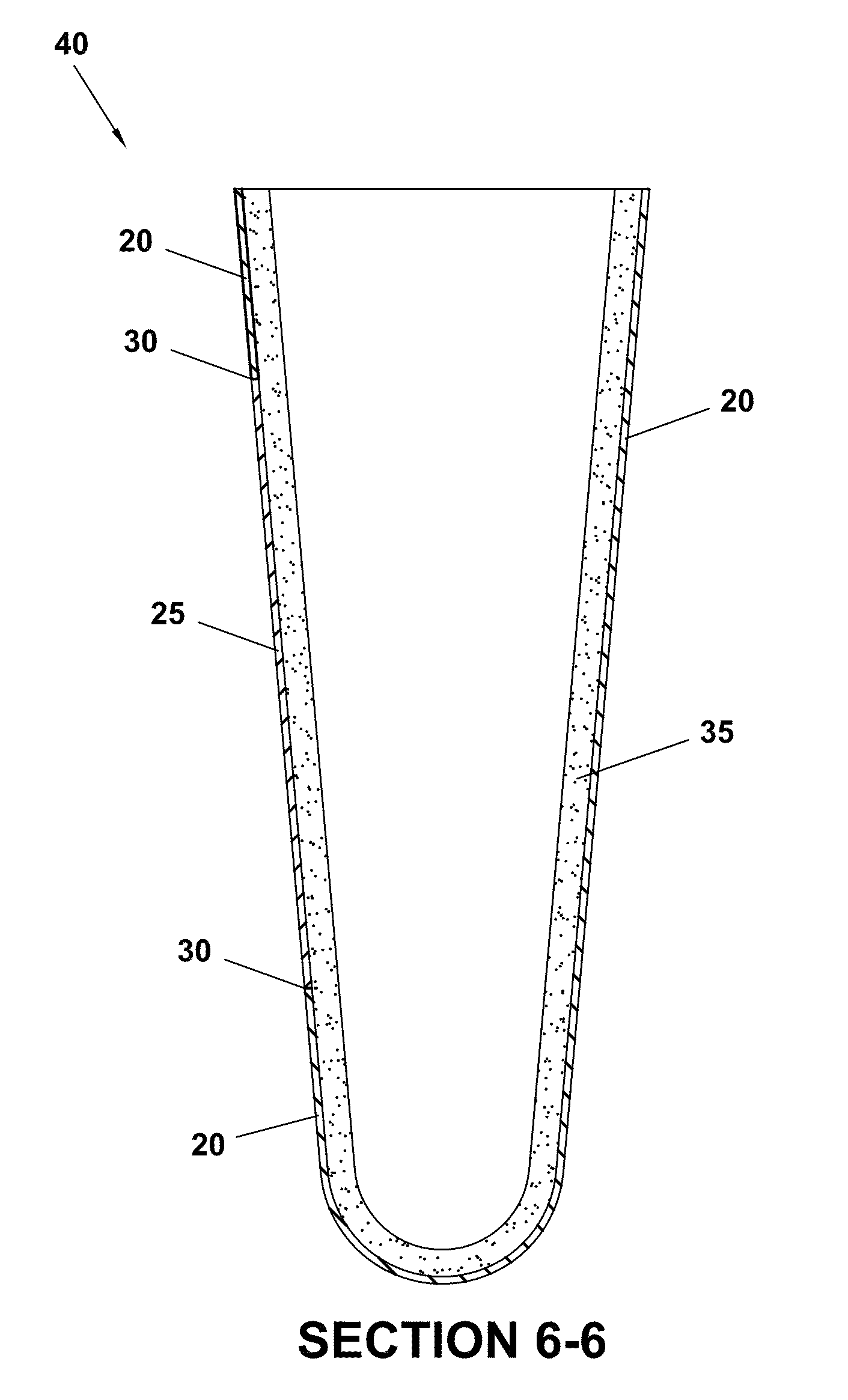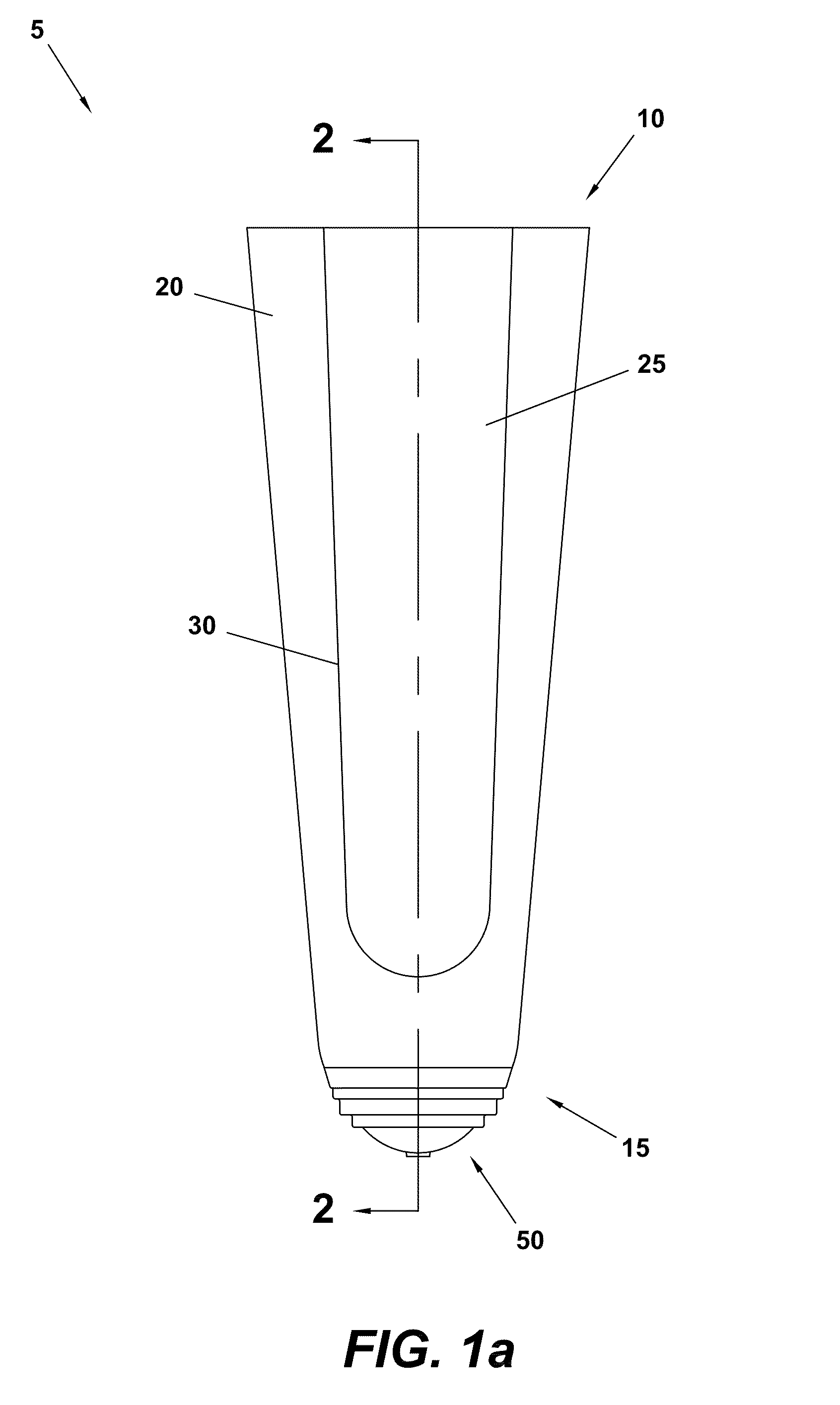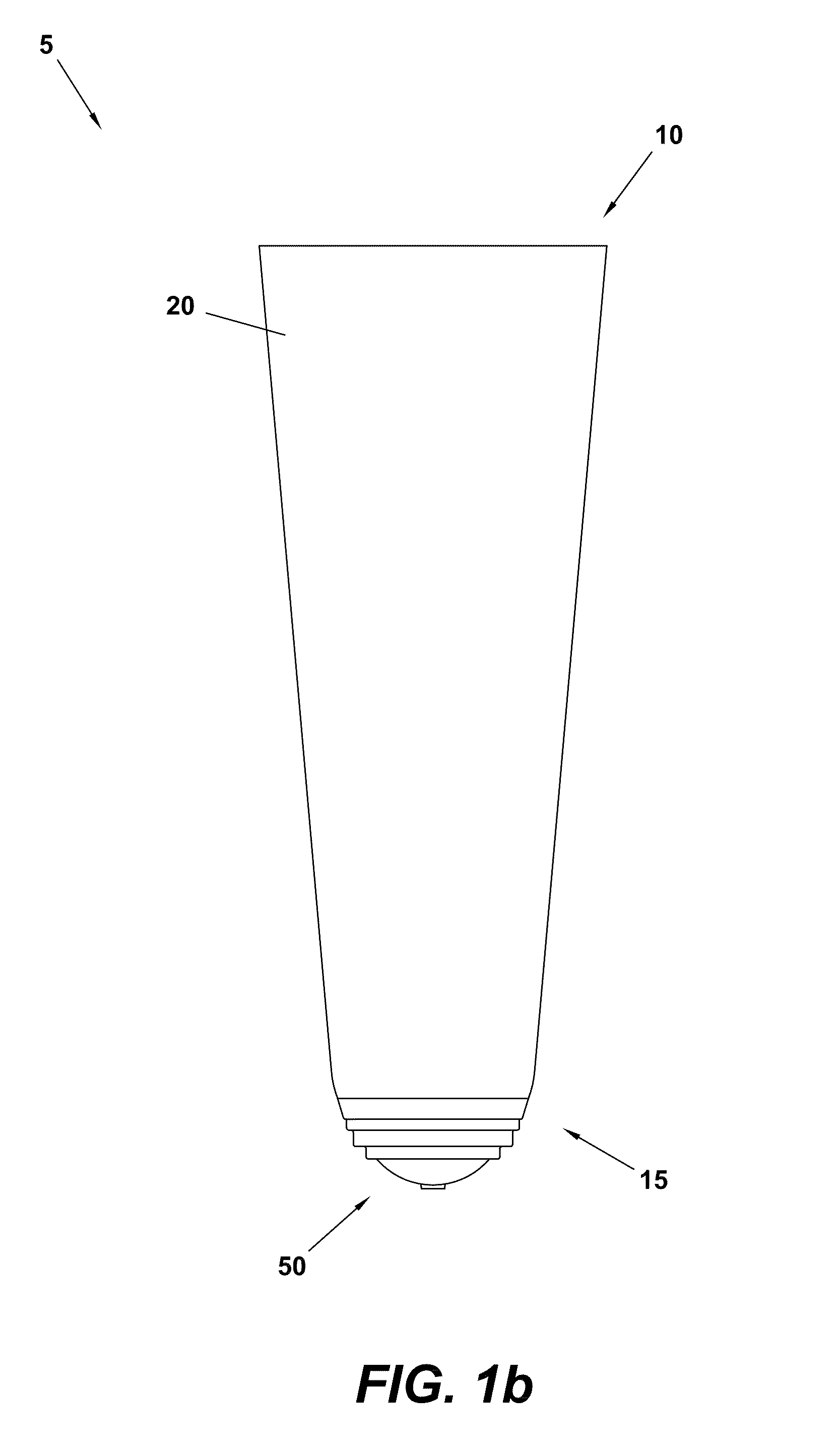Polymeric Prosthetic Liner With Controlled Stretch Characteristics
a polymer prosthetic and stretchable technology, applied in the field of fabric-covered polymeric prosthetic lines, can solve the problems of inability to completely prevent or completely inhibit the stretching of the liner in the longitudinal direction, the associated liner and the length of the residual limb is also highly stretchable. achieve the effect of facilitating the connection of the liner and increasing comfor
- Summary
- Abstract
- Description
- Claims
- Application Information
AI Technical Summary
Benefits of technology
Problems solved by technology
Method used
Image
Examples
Embodiment Construction
)
[0031]Exemplary embodiments of a controlled-stretch prosthetic liner of the present invention are described below. These exemplary embodiments are provided solely for the purpose of illustration, and not limitation. As described above, each embodiment includes an inner layer of polymeric material and an outer layer of fabric. With respect to the cross-sectional views illustrated herein, it should be noted that the thickness of the fabric layers and the polymeric material layers has been exaggerated for clarity. Further, the fabric layers and polymeric material layers are not necessarily drawn to scale with respect to each other.
[0032]A first embodiment of a below knee (BK) controlled-stretch prosthetic liner (hereinafter “liner”) 5 of the present invention is depicted in FIGS. 1a-1b and FIG. 2. As shown, the liner 5 includes an open end for permitting insertion of a residual leg, and a closed end 15 opposite the open end.
[0033]As can be best observed in FIG. 2, the interior of the ...
PUM
 Login to View More
Login to View More Abstract
Description
Claims
Application Information
 Login to View More
Login to View More - R&D
- Intellectual Property
- Life Sciences
- Materials
- Tech Scout
- Unparalleled Data Quality
- Higher Quality Content
- 60% Fewer Hallucinations
Browse by: Latest US Patents, China's latest patents, Technical Efficacy Thesaurus, Application Domain, Technology Topic, Popular Technical Reports.
© 2025 PatSnap. All rights reserved.Legal|Privacy policy|Modern Slavery Act Transparency Statement|Sitemap|About US| Contact US: help@patsnap.com



